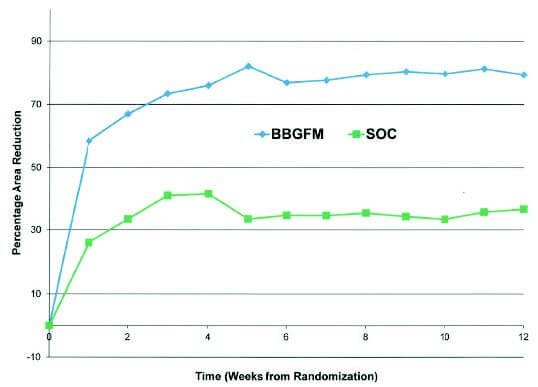
Clinical Evidence
The latest research on Mirragen® and how effective it can be on a variety of wounds.
Multicenter Randomized Controlled Trial
Study comparing Mirragen plus SOC (Standard of Care) to SOC alone for the treatment of diabetic foot ulcers. After two weeks of screening, patients are randomized for 12-week treatment. For this patient population, Mirragen had the greatest impact during first 4 weeks of treatment.1
79.4% vs. 36.5%

Mirragen doubled the SOC in wound area reduction (79.4% vs 36.5%)
2.8x

Mirragen increased wound closure 2.8x vs. SOC
0 Infections

SOC had 5 patients withdrawn due to infection, Mirragen had 0 adverse events related to infection of the index ulcer.
In an RCT, investigators concluded that angiogenesis in the Mirragen-treated group was “probably rapid because wound area reduction on average is high over the first week”.1

Weekly percentage wound area reduction by treatment group (From Armstrong et al. 2021, Figure 4).
Versatile Form Factor



1 Armstrong DG, Orgill DP, Galiano RD, et al. A multi-centre, single-blinded randomized controlled clinical trial evaluating the effect of resorbable glass fibre matrix in the treatment of diabetic foot ulcers. Int Wound J. 2021;1-11.